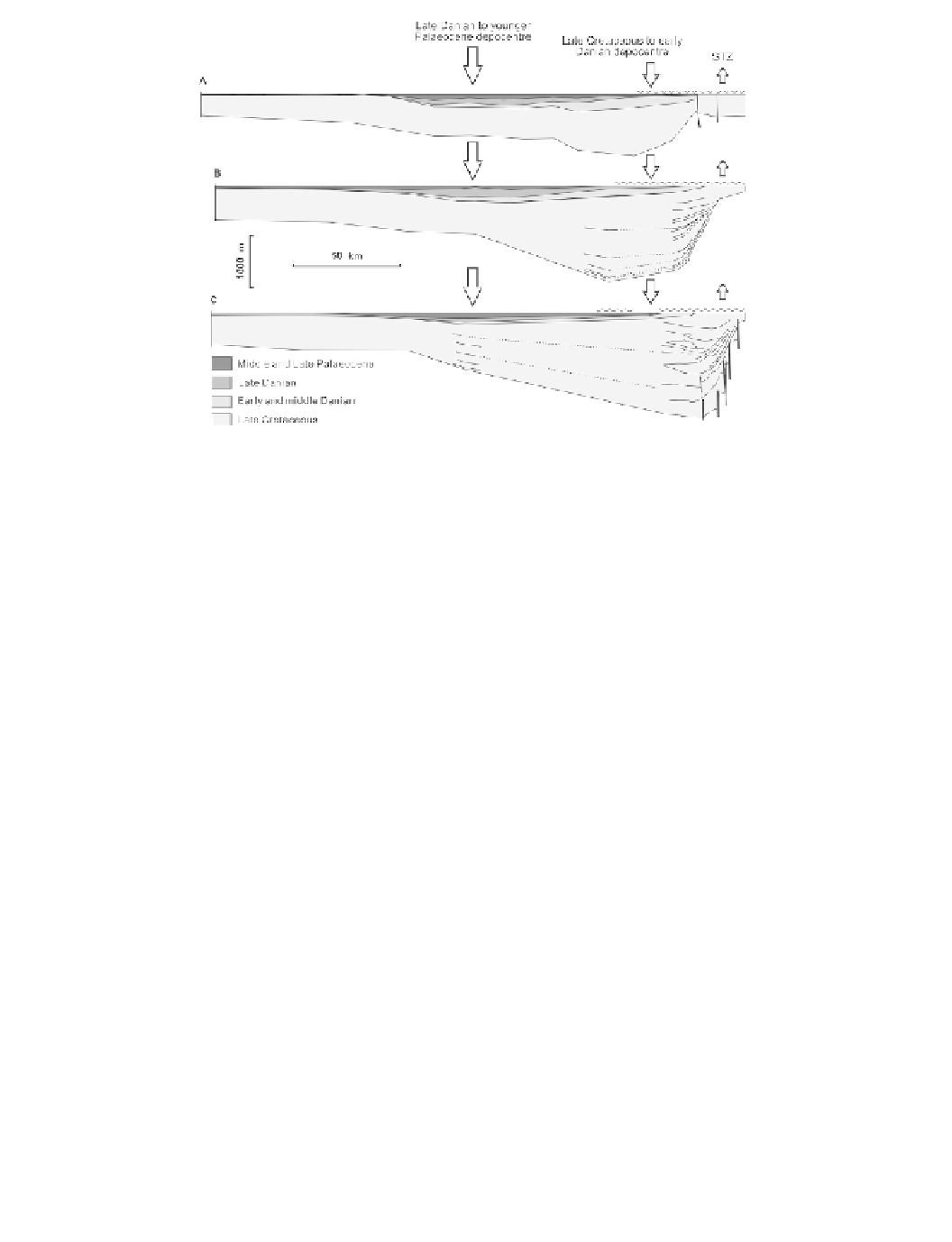Geoscience Reference
In-Depth Information
Figure 10.4 Geological profiles constructed from detailed subsurface data across the Sorgenfrei-
Tornquist Zone (STZ) in Denmark and the associated sedimentary deposits (modified from Nielsen
part (profile C) was strongly inverted. Late Cretaceous deposition occurred during the primary,
compressional, inversion. The shallow and symmetrical Paleocene sequence was deposited during
the secondary, relaxation, inversion. For color version, see Plates section.
transpressional shortening involving reverse activation of former normal faults and the
tectonic event that differed in style from the Late Cretaceous convergence-related phases.
Now the inversion ridges experienced a domal, generally non-ruptural uplift, which involved
both the Late Cretaceous inversion ridge and the proximal areas of the marginal troughs.
Simultaneously, secondary, shallow and more symmetrical marginal troughs formed in
more distal positions.
The occurrence of the two structurally distinct inversion phases is particularly well docu-
mented in the Sorgenfei-Tornquist Zone (STZ) of the Danish Basin (
Figure 10.4
)
, but their
existence can also be inferred from the results of detailed studies of other structures (Vejbæk
depocentre that formed mainly during the Campanian and Maastrichtian. This is evidenced
by the thinning of internal chalk structures onto the inversion ridge and the embedded sand-
stone body that was shed into the chalk basin from source areas along the inversion ridge of
the primary phase of inversion continued through the early and middle Danian. The onset

